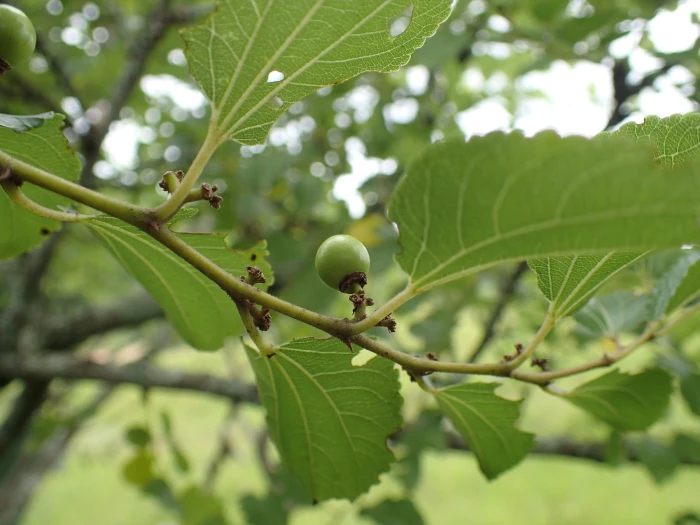Buffalo Thorn
(Ziziphus mucronata)
Buffalo Thorn (Ziziphus mucronata)
/
/

Mahomed Desai
CC BY 4.0
Image By:
Mahomed Desai
Recorded By:
Copyright:
CC BY 4.0
Copyright Notice:
Photo by: Mahomed Desai | License Type: CC BY 4.0 | License URL: http://creativecommons.org/licenses/by/4.0/ | Rights Holder: Mahomed Desai | Publisher: iNaturalist | Date Created: 2021-01-27T10:35:26-08:00 |

























Estimated Native Range
Climate Requirements for Bethlehem, Pennsylvania
| This Plant | Your Site | Plant Suitability for Your Location | ||
|---|---|---|---|---|
| • Precipitation | 1" - 103" | 45" | Aquatic | Aquatic |
| • High Temp. | 73°F - 110°F | 86°F | Your summer temperatures are normal for this plant. | Excellent |
| • Low Temp. | 16°F - 73°F | 19°F | Your winter temperatures are normal for this plant | Excellent |
This plant may not grow well at your location - your precipitation is too high.
Summary
Ziziphus mucronata, commonly known as Buffalo Thorn, is a deciduous tree native to savannas, woodlands, and riverine areas in sub saharan Africa. It is adaptable to various habitats, often found on termite mounds, which provide nutrient-rich soil. The tree typically grows up to 56 feet (17 meters) tall with a dense, spreading canopy. Buffalo Thorn has distinctive zigzag branchlets with paired sharp thorns, which are believed to protect against predators. It produces small, greenish-yellow flowers that are inconspicuous, followed by brownish-red, edible fruit that is favored by birds and wildlife.
Buffalo Thorn is valued for its hardiness and ability to thrive in a range of conditions, making it suitable for reforestation projects and erosion control. It is also planted for its cultural significance and uses in traditional medicine. In cultivation, it requires full sun to light shade, moderate water, and well-drained soil. It is relatively low-maintenance once established but can be susceptible to pests like scale insects and borers. The tree’s thorns can make it challenging to work with, so it is not commonly used in areas where frequent maintenance is required.CC BY-SA 4.0
Buffalo Thorn is valued for its hardiness and ability to thrive in a range of conditions, making it suitable for reforestation projects and erosion control. It is also planted for its cultural significance and uses in traditional medicine. In cultivation, it requires full sun to light shade, moderate water, and well-drained soil. It is relatively low-maintenance once established but can be susceptible to pests like scale insects and borers. The tree’s thorns can make it challenging to work with, so it is not commonly used in areas where frequent maintenance is required.CC BY-SA 4.0
Plant Description
- Plant Type: Shrub, Tree
- Height: 20-30 feet
- Width: 15-25 feet
- Growth Rate: Moderate
- Flower Color: Yellow
- Flowering Season: Spring, Summer
- Leaf Retention: Deciduous
Growth Requirements
- Sun: Full Sun
- Water: Medium, High
- Drainage: Medium, Fast
Common Uses
Bird Garden, Low Maintenance
Natural Habitat
native to savannas, woodlands, and riverine areas in sub saharan Africa
Other Names
Common Names: Buffalo Thorn, Gewone Blinkblaar, Blinkblaar-wag-’n-bietjie
Scientific Names: Ziziphus mucronata, Ziziphus abyssinica, Zizyphus mucronata
GBIF Accepted Name: Ziziphus mucronata